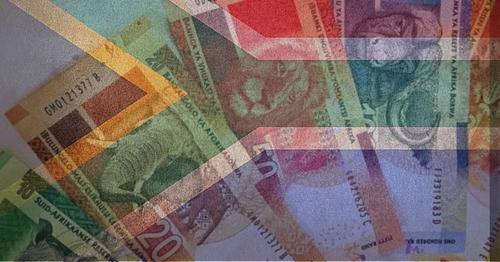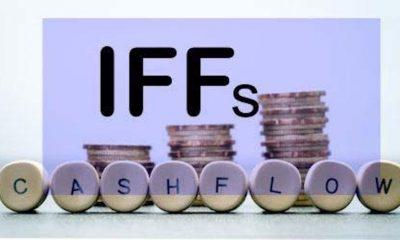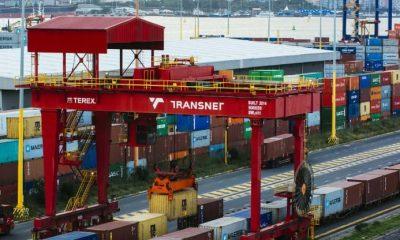Business
South Africa Faces Ongoing Struggles Despite Temporary US Tariff Reversal

In a surprise move that sent markets into a brief moment of optimism, US President Donald Trump announced a suspension of the 30% tariffs on South African imports on April 9, 2024. The immediate response was positive, with the rand pulling back from historic lows of R19.93 to settle at R19.30. However, despite this brief relief, South Africa’s economy remains in deep turmoil, facing a range of challenges both from abroad and within its borders.
Temporary Tariff Reversal: A Short-Term Relief for South Africa
The move by Trump to ease the tariffs was a welcome surprise for South Africa, which had been facing a 30% tariff on imports to the US. This reduction to 10% is certainly a step in the right direction, but it’s important to note that this is merely a “pause” lasting 90 days, leaving much uncertainty about future US trade policy. The rand’s momentary bounce back shows the market’s sensitivity to global trade policies, but it also reflects the larger economic issues that remain unresolved.
By Thursday, April 10, the rand had weakened again to R19.45/$, underscoring the fragility of South Africa’s economy in the face of global instability. The temporary tariff reprieve hasn’t solved the underlying economic issues that continue to weigh heavily on South Africa’s financial future.
Persistent Economic Troubles for South Africa
Even though the temporary reduction in tariffs offers some short-term relief, several forces are still at work that continue to pressure South Africa’s economy:
-
Ongoing 10% Tariffs on Exports: The US is maintaining a 10% tariff on South African exports, which still places strain on key sectors like agriculture and automotive.
-
Escalating US-China Trade War: With tariffs on Chinese imports now reaching 125%, global trade tensions remain high, impacting markets worldwide, including South Africa.
-
Political Instability: Internal political tensions between the DA and ANC put the future of South Africa’s Government of National Unity (GNU) in question, creating investor uncertainty.
-
AGOA Participation Under Threat: South Africa’s participation in the African Growth and Opportunity Act (AGOA) is under increasing threat, which could limit market access for key South African exports to the US.
These challenges are compounded by the unpredictability of the Trump administration’s future decisions, which keeps investors on edge. Despite a temporary reprieve on tariffs, the uncertainty surrounding South Africa’s trade relationships, particularly with the US, continues to cloud the economic outlook.
The Impact on South African Consumers
For the everyday South African, the effects of global trade policies like these are not distant concerns—they have real, tangible impacts. Sebastien Alexanderson, Head of National Debt Advisors, emphasized how vulnerable South African consumers are to global trade fluctuations. He noted that the rand’s decline against the US dollar has already driven up the cost of imported goods, including essentials like food and fuel.
Even with the tariff suspension, inflationary pressures remain, especially in sectors like agriculture, where tariffs have led to fears of rising food prices. Furthermore, key industries such as automotive, which have already been hit by tariffs, face additional strain, with potential job losses on the horizon.
Political Instability: A Key Factor in South Africa’s Economic Struggles
In addition to external economic pressures, South Africa’s internal political situation adds another layer of complexity to the economic challenges. The ongoing tensions within the coalition government over issues like taxation and spending are contributing to investor anxiety, driving up bond yields and making borrowing more expensive for both the government and consumers.
The uncertainty surrounding the future of the GNU and its policies is a significant concern for investors, who are already wary of the volatile global landscape. As Daniel Wesonga, senior sales manager at forex broker Pepperstone, pointed out, the combined weight of global trade tensions and local political instability is likely to keep South African markets on edge for the foreseeable future.
A Fragile Economic Outlook for South Africa
Looking forward, while the temporary pause on tariffs offers a glimmer of hope, South Africa’s economic situation remains fragile. With global trade tensions continuing, internal political instability, and the looming threat of losing access to AGOA, South Africa’s economic outlook remains uncertain.
For now, South Africans must brace themselves for continued volatility in currency values, rising costs of living, and the uncertain fate of key industries like agriculture and automotive. Whether the country can weather these economic storms will depend largely on how it navigates both the external pressures of global trade and the internal challenges posed by its political landscape.
{Source BusinessTech}
Follow Joburg ETC on Facebook, Twitter , TikTok and Instagram
For more News in Johannesburg, visit joburgetc.com



























